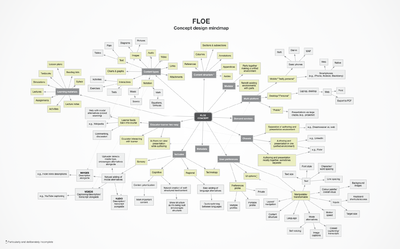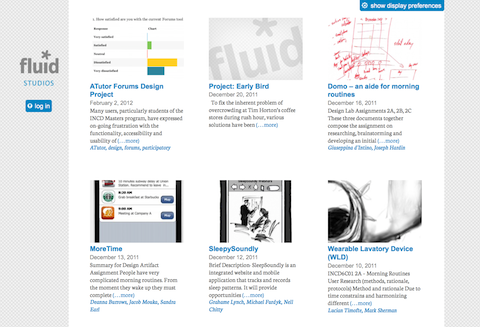Inclusive Learning
Motivation: learners learn differently
We have heard that students feel disenfranchised, do not see education as relevant, see the system as too inflexible and do not feel that their needs are being recognized or met. The learner most in need of a new approach to education is the marginalized learner. To reach that learner, learning must be inclusive. Society must ensure that no members are marginalized or excluded from educational opportunities.
If our goal is to optimize learning for all learners we must recognize that learners learn differently. There is neither a single take on learning nor a best way to teach a concept. Learning outcomes research shows that learners learn best when the learning experience is personalized to their learning needs. Learning breakdown and drop out occurs when students face barriers to learning, feel disadvantaged by the learning experience offered or feel that their personal learning needs are ignored. We must take a flexible and multi-modal approach to teaching and learning.
For additional information, visit the Floe Project presentations on Slideshare.
Solution: Customization and personalization, and demands with matching.
Open Educational Resources have the advantage of being “born-digital” and can therefore harness the potential mutability or plasticity of digital delivery systems and digital content to assist in addressing the diversity of learning needs. Unfortunately many of our resources are not designed to take advantage of this plasticity and constrain the flexibility needed to tailor the experience to diverse learners.
OER has the ingredients and foundational mechanisms to create the richly varied pool of resources needed to address the diverse needs of learners, thereby producing the variety of skills and knowledge needed in today’s reality. OER has tremendous potential to meet the needs of a growing group of un-served learners who experience disabilities. Serving this group of learners will also remove barriers to OER adoption.
OERs need to be inclusive in the following dimensions:
- Cognitive
- Technological
- Sensory
- Regional
- Dexterity
- Collaborative
Learning needs that affect learning can include:
- sensory, motor, cognitive, emotional and social constraints,
- individual learning styles and approaches,
- linguistic or cultural preferences,
- technical, financial or environmental constraints.
Figure 1: Floe concept design mindmap illustrates the many different ideas and parts which work together to enable a one-size-fits-one education.
Benefit of openness
Open content allows for the remixing of content which allows for the creation of derivative content that makes the original materials more inclusive to the above dimensions. Open content enables:
- Creation/delivery/use/re-use/derivations/augmentations
- Innovative and relevant, fresh material
- Potential cost (and effort)-savings through sharing
- Depth of materials from multiple authors (additive approach)
- Content licenses that keep content alive and open CC-By Education
- Universities adopting open access policies COAPI
Floe’s approach helps further enable open content by making the process of sharing, modifying, and augmenting easier and more direct.
Strategy toward approaching matching/demand of content:
- No need to change content
- Tweaks and adjustments in presentation of content
- Supplementation of content
- Recreation of content
Achieving an accessible or inclusively designed OER system requires the capacity to match the learning needs of individual learners. This requires OER resources that are amenable to reuse, and a large, diverse pool of OERs. If the default OER is inaccessible to a specific learner the delivery system would either:
- transform the resource (e.g., through styling mechanisms),
- augment the resource (e.g., by adding captioning to video), or
- replace the resource with another resource that addresses the same learning goals but matches the learner’s specific access needs.
To achieve this requires:
- information about each learner’s access needs,
- information about the learner needs addressed by each resource,
- resources that are amenable to transformation, and a pool of alternative equivalent resources, and
- a method of matching learner needs with the appropriate learning experience
That is the work that Floe focuses on. To further understand what Floe is working on, visit the Floe Scenario narrative.
Figure 2: A screen capture of the Fluid Studios website.
Fluid Studios was a place for innovation, exploring mutability of interfaces, automating augmentation, and experimentation. Students, instructors, researchers, developers, and designers used the space to try new approaches to inclusivity. Participants have since gone on pursue their own initiatives and Fluid Studios was taken offline in 2015.

